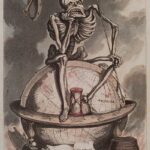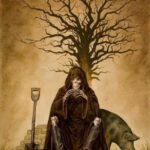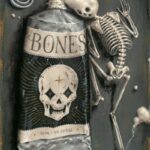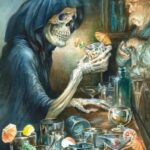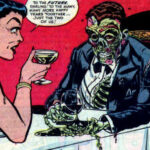It is true that death is universal and that there are many common traits among death rituals. Furthermore, when examining death rituals cross-culturally it is easy to attribute the same symbolic significance to similar rituals. Nevertheless, after looking at the rituals, used in the context of the culture they were created in, the symbolic meaning can be quite different.
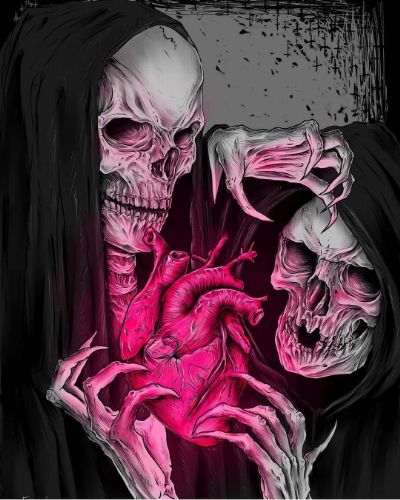
Crying, for instance, is common at funerals. In our western countries it is a spontaneous expression of feeling whereas in other cultures crying is mandatory on certain occasions, including funerals, to symbolize the attachment between persons .
Thus, it is important to emphasize the situational aspects of death rituals when interpreting these rituals cross culturally and to take into account the cultural context where the rituals that surround death take place.
Omens
Omens – i. e. symbolic interpretation of certain signs.
In most ancient cultures, death was considered as a sign which can be interpreted in many ways. It seems that people have been very willing to observe anything that might have served as a death omen in their everyday life.
The foreteller of death can be a bird or some other natural object. An instance of death in the neighbourhood can be foretold by a raven’s croaking, a bird flying on the window or into the house, a death tick ticking on the wall, a dog’s howling, the cackling of a hen. The number of years one expected to live was counted by the cuckoo’s calls. Other omens include noises in house at nights, itching of the nose, stalks of straw crossed in a peculiar way during threshing the grain,. In spring one could foretell poor crops and also death Even at childbirth people tried to foretell by looking out, what kind of death the baby would die.
Dreaming of a dead person, a priest, or a gift given by a dead person predicted the dreamer’s death. The symbolic language is the most interesting feature in the interpretation of dreams.
Omens were also observed during funerals.
At the moment of death
The dead person is a primary guest at the funeral because the person who is dying is experiencing a variety of things, which a death ritual needs to address – the dissolution of personality, the loss of contact with the body, the loss of the family and friends, the fear, the wonder and the awe of this transformation.
And those who are with him, family and friends, also experience the coming of Death with terror and confusion, grief, fear at their own mortality. Some pretend that the spirit will sometimes remain partly tied to the corpse, in a state of greater or lesser awareness and confusion and pain for a period of time unless assisted to journey on. And so because she may very well need to be there.
Most rituals include preparation of the dying person to the great journey. It can be spiritual but also physical. Family, friends and relatives also assist the the future bereaved.
Preparation of the corpse
In Judeo/Christian countries like America and most of Europe, the body is embalmed and often dressed in fancy clothes to be buried. It has been suggested that this ritual is preformed because the “sacred quality of man exists in the soul and spirit, and that the body, as a temple or chamber for the spirit during life, deserves decent and respectful treatment” (Haberstein, 1960). In some parts of Africa the corpse is bathed and dresses as well. Some Africans believe that there is a long journey between this world and the next and that death is a continuation of life and not an ending. Thus, the body is bathed and dressed in a manner to represent these beliefs of travel for a difficult journey. Therefore, although the ritual of ‘grooming’ of the deceased for burial may look similar for both Americans and Africans the symbolic aignificance of the rituals are quite different.
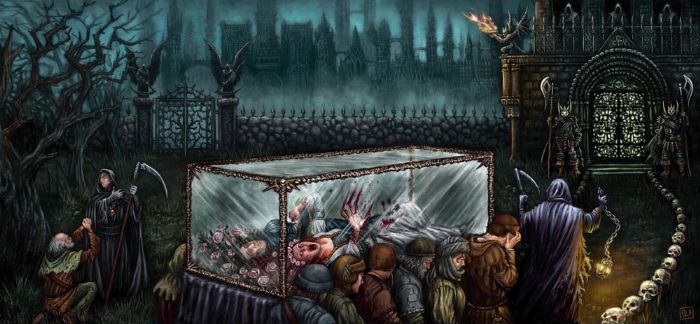
The distinct reality of death
A number of beliefs seem to distinguish the two realities. The concept of two realities is also supported by a custom not to take anything along from cemeteries, even the berries growing there belonged either to the dead or to the «God’s birds».
One could burn or bury the clothes that had been in direct contact with the corpse. In Britanny, when the dead body was carried out of the house a nail was hammered in the threshold as a magical metal object or simply as a sign to prevent the appearance of the deceased person in any dangerous form. The straw on which the dead body had been lying was burnt on a field where people jumped over the fire singing fear (go) that way; love (come) this way – another example of how bonds with the other side could be broken.
At the same time, it was also worthwhile to manipulate the physical body of the deceased for selfish reasons (just as it is worthwhile to walk the paths of the dead in fairy-tales for selfish reasons). Anyone who had a ganglion on the arm or leg had to touch the same spot on a dead body, after which he or she could hope to recover. Anyone who feared the dead had to touch the feet of the dead body with his/her hand to get rid of the fear. While trying to break the habit of drinking, a helpful method was said to be putting a coin which had been kept in the mouth of a dead person into the water, and then giving the water to the drunkard to drink without his being aware of – although in the mentioned case the trick had no effect. The water used for washing the body, was commonly used for the purposes of magic.
The 3 days
According to the general belief the soul of the deceased person remained at home for three more days after the death. Canonically this can be explained with the fact that the Resurrection of Christ took place on the third day after his death, according to the apocryphal tradition on the third day he went to the Hell to put Satan in chains and redeem the patriarchs. For three days the deceased was not talked or gossiped about because during this time he could hear everything. During that time nothing was lent to others for this would have disturbed the dead person. During the three days people spoke in a low voice and did not work much.
Money and death
In many cases coins were placed on the victim to help him buy a place in the other world. They were either put on the eyes of the deceased into the coffin. In the Roman death ritual, the coin was placed in the mouth of the dead for Charon in the underworld.
The continuation of body in Christian afterlife is apparent from the custom to put a handkerchief in the left hand of the dead, so that he can make the cross sign with the right hand at his arrival.
In Russia, a copper coin was thrown in the grave to help the dead person redeem a better place in the other world. For the same purpose, a bottle of vodka could be used. The idea of this life continuing in the other world is also conveyed by the belief that if, after the death of the farmer or his wife, a horse or a cow died on the farm, it meant that the deceased took his/her share with him/her to the other world (usually an egg was put in the armpit of the body so that he/she would symbolically have «his/her share.

